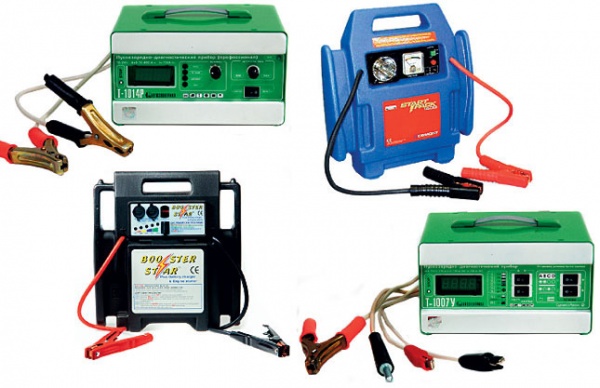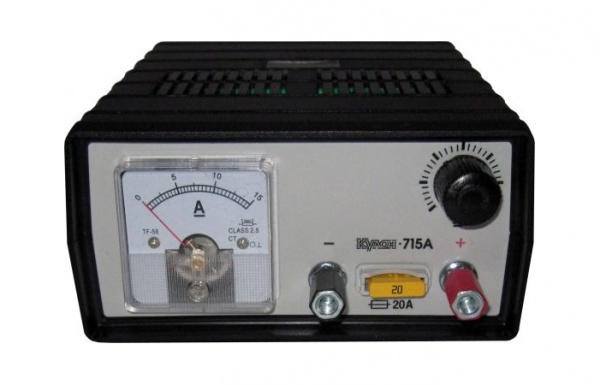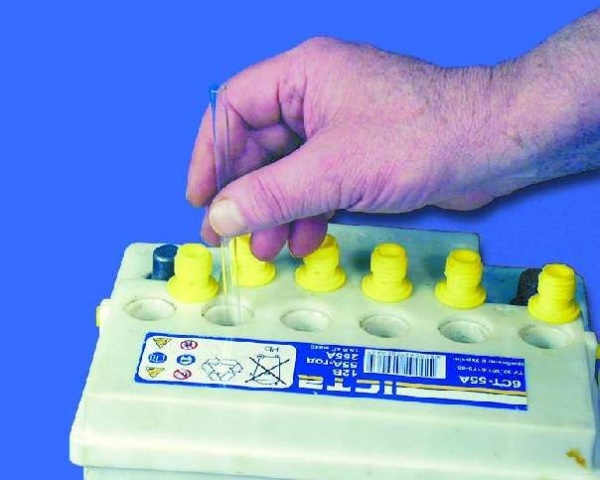How to charge a car battery charger
The car battery is a rather unpretentious detail, and in normal operating conditions, it itself is charged from the working generator. But there are situations that take the battery from the usual regime that fully deprived it of the desired voltage. In such situations, a unique device comes to help, capable of returning the battery for life in a short time. To properly charge the car battery charger, you need to know about some nuances.
Types of automotive batteries
There are several types of car batteries.
Preparation
Before you start charging a car battery by a charger, you will have to face the problem of selecting a DC source, that device that serves as an intermediary between the electrical outlet and the battery, converting alternating current to the permanent. This happens when the alternating current overcomes the path through the transformer and the diode bridge of the charger. The service life and the quality of the battery charge depends on the correct selection of this device. Depending on the budget and the requirements for functionality, you can choose the optimal version of the charger. It can charge or make the engine start when the battery is discharged. As a rule, motorists choose universal devices capable of performing both functions.
Currently, all modern chargers automatically protect the car battery from reloading and improper terminals. When choosing a device, it is better to take something that can produce more current than your battery needs. The charger involves a long term of use. It is possible that in a couple of years you will start using a larger power battery for which the previously purchased charger is also suitable.

Charging
Starting devices allow you to quickly charge the automotive battery without removing it. To do this, just throw the terminals and attach the battery charger. The scheme is standard: "+" to the plus, "-" to minus. With this type of charging, the current regulator should be set at the maximum value - up to 70% of the capacity of the car battery. Turn on the device into the outlet for 20 minutes. It is important to ensure that the electrolyte does not heat up above 45 degrees. This method is suitable only for emergency cases. Often to carry out such shakes are not recommended.
To charge the car's battery with a charger, the battery will have to remove. If the machine stood for a long time in the cold, then the battery must be heated at room temperature.
For an acid battery, any type of modern chargers will be suitable. Conduct charging in a dry ventilated room:

For quick recharge it happens enough 20 minutes. However, in order for the car battery to be charged completely, it is better to leave it for 8-10 hours when the current corresponding to the 10% battery capacity.
By setting the minimum current value, you should understand: the lower the value, the longer the charging will be. However, in such a way it is possible to solve another problem - to eliminate the sulfate of the plates.
What needs to be done when the battery charged
First of all, check how the indicators of the conductive fluid changed. The electrolyte density must be approximately the same in all banks. The correct values \u200b\u200bare 1.27 - 1.28 g / cc. Most often, the problem with the density of the conductive fluid in the discharged automotive battery, appear only in some banks. When the battery is discharged, the density decreases sharply, and increases when you charge the device. If, after a complete charge, you did not receive a proper result, it makes sense to think about the internal problems of the battery - closures, the destruction of plates or sulfate.
With a favorable outcome, tighten the banks, as close as possible and leave the battery for a couple of hours alone. After that, make control measurements of the electrolyte state. With a successful completion of the process, the density should remain unchanged. Car battery is ready to use.

Safety measures when charging
Getting Started Charging the Car Battery Charger, it should be noted that the battery can carry a certain danger:
- inside the battery - poisonous and very dangerous solutions for humans. Checking the electrolyte indicators is better carried out in rubber gloves. They will also save you in case of damage to the hull and henels on it of electrolyte;
- in the process of charging the car battery, highlights a lot of poisonous evaporations: arsenic, stubborn, hydrogen, chlorine, sulfurous gas and other dangerous substances for people. They are able to cause various ailments - nausea, dizziness. And besides, hazardous chemicals are settled on solid surfaces and accumulate with each new charging. Therefore, in order not to end the danger of your loved ones, it is better to charge in the garage;
- in case of violation of the charging rules, an explosion of gases formed during the boiling process of electrolyte can occur. The main reason for this can be overheating. Using the charging device of an old sample, not equipped with automatic overheating protection, it is necessary to carefully ensure that the electrolyte temperature in banks does not exceed 45 degrees. In particular, it applies to quick charging.
On the video, you can see the correct battery charging process:
Is it possible to do without a charger
If you often resort to emergency accelerated charging, then the battery will live long, may not even work out the term laid it. Therefore, before charging the car battery by the charger, make sure that nothing can be done anymore.
- In winter, the usual heating of the device can help at room temperature. A density will be restored in a drop-hearted electrolyte to start the engine.
- It is advisable to regularly inspect the car battery to detect cracks on the housing, maintain the required level of electrolyte and early detection of sulfate problems or charring plates.
- Check the charge level with a portable multimeter as often as possible.
- Keep clean terminals. Timely spend cleaning from oxidation. This will improve contact and allow you to start to start even with a weak battery charge.
- Attaching the terminals, it is better to cover them with lubricant. Oxide film will increase resistance and prevent oxidative processes. As a lubricant, you can use solidol or its more modern option - Litol. If neither one nor the other turned out to be at hand, you can use an ordinary petroleum or even machine oil. It is important to understand that the lubricant should be applied to the screw terminals, and not between them. Otherwise, lubricant only hurt the contact.










